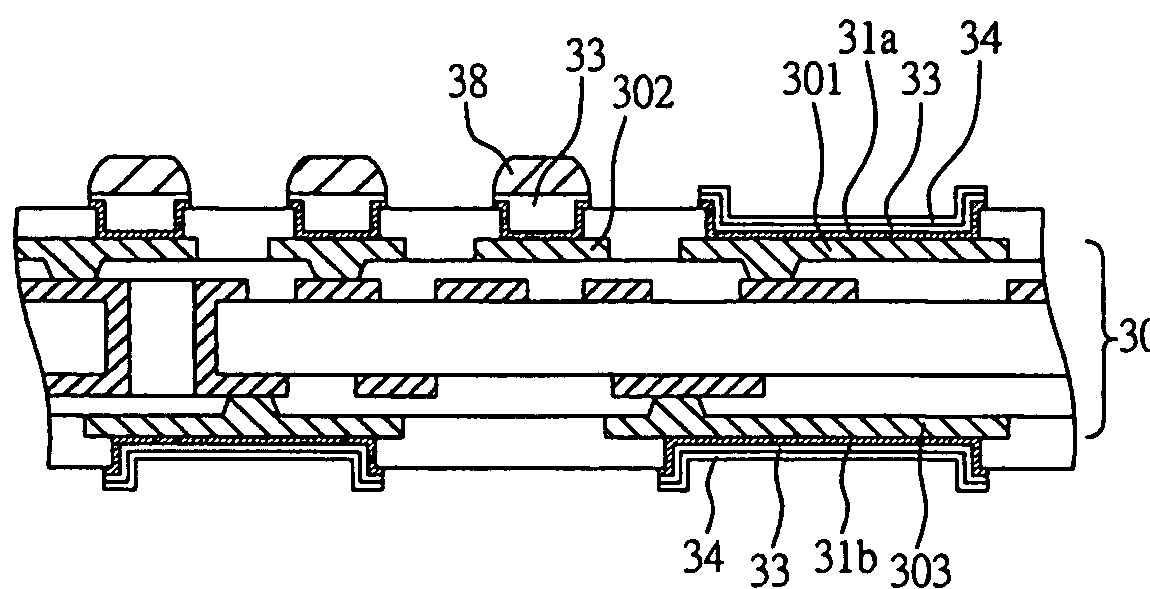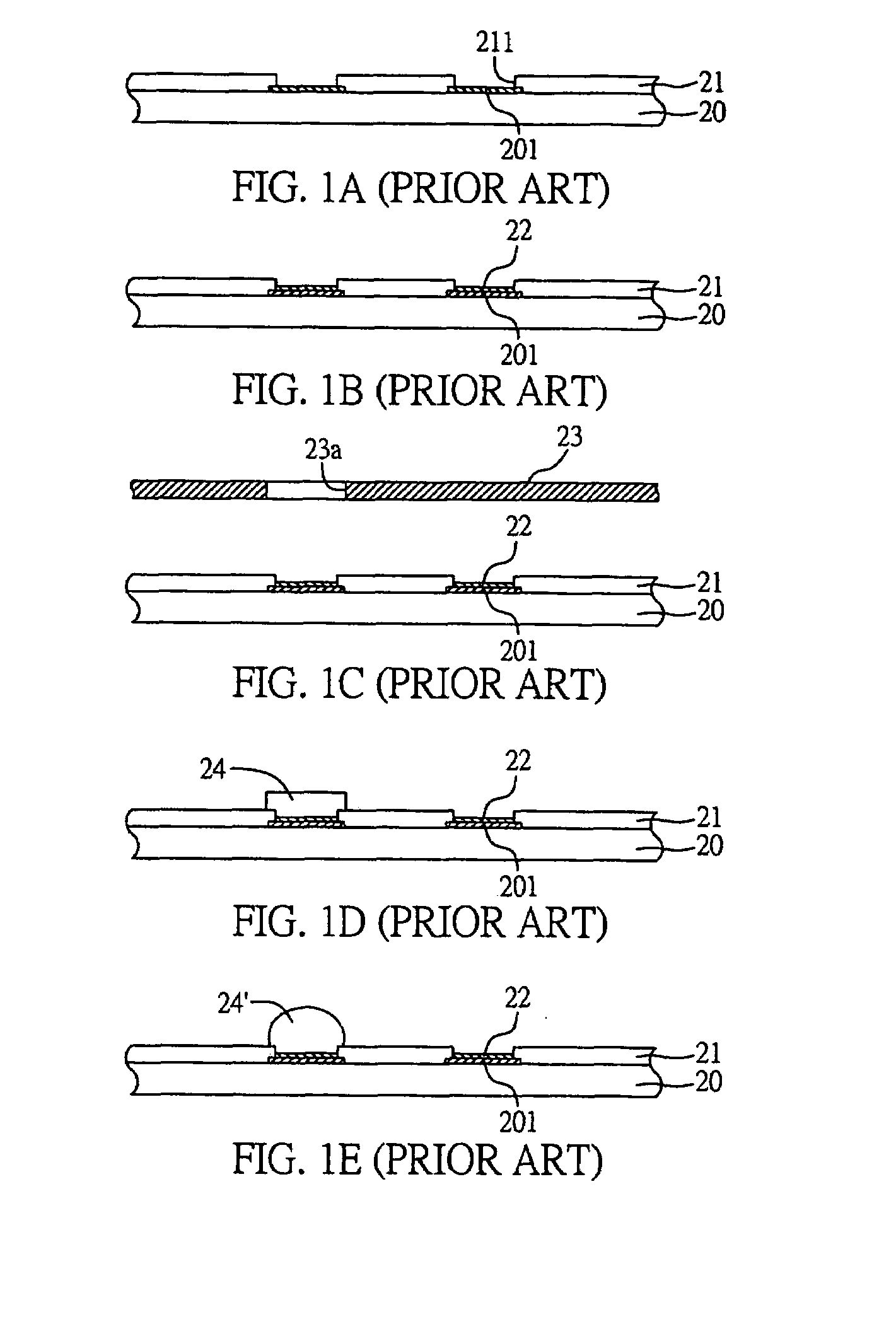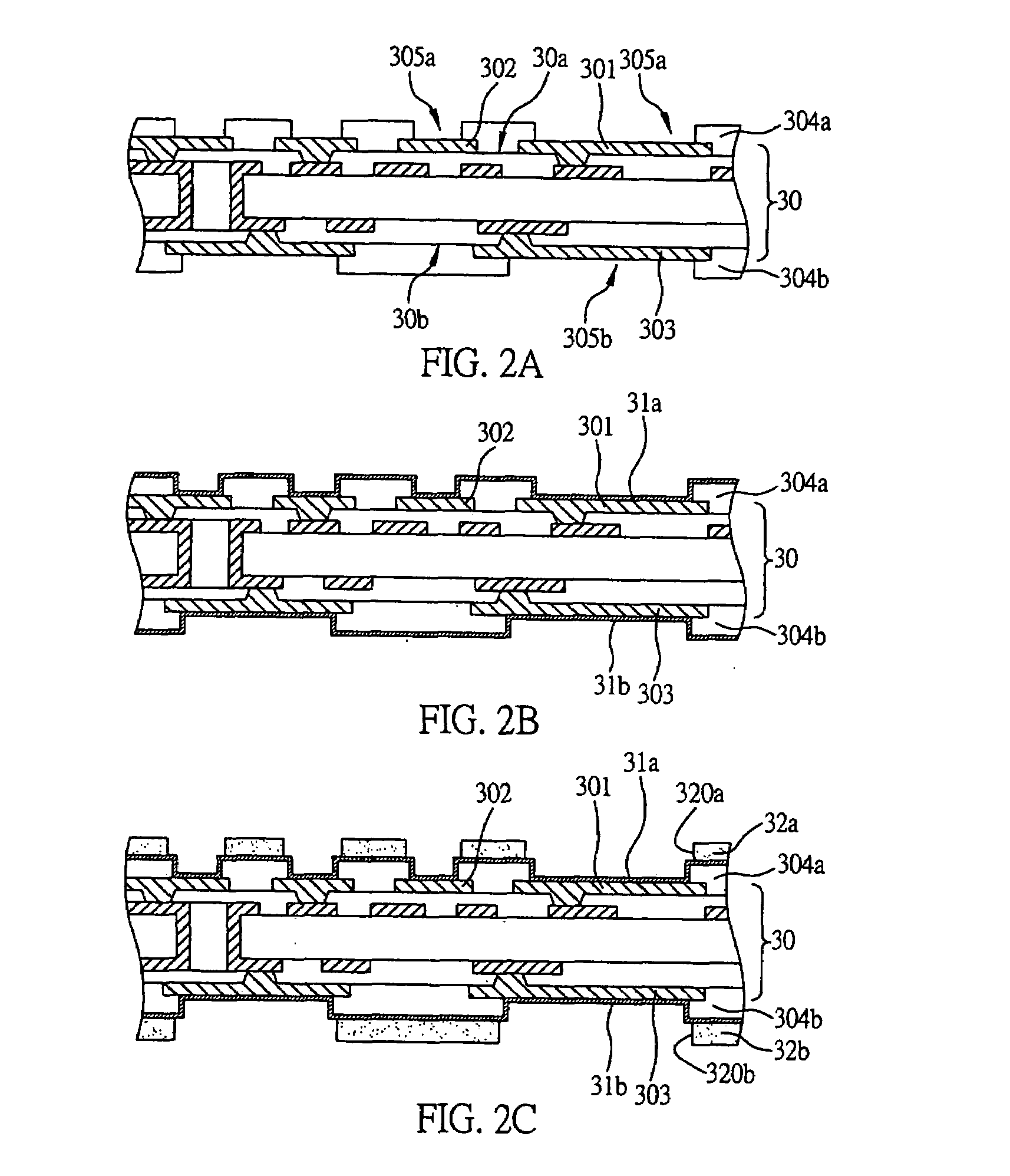Conductive structures for electrically conductive pads of circuit board and fabrication method thereof
a technology of electrically conductive pads and conductive structures, which is applied in the direction of resist details, printed circuit aspects, printed circuit manufacturing, etc., can solve the problems of adversely affecting the electrical connection between the chip and the circuit board, and difficult control of the height of solder bumps or solder balls in the subsequent process, so as to prevent metal interface problems, fine electrical conductive, and the effect of overcoming
- Summary
- Abstract
- Description
- Claims
- Application Information
AI Technical Summary
Benefits of technology
Problems solved by technology
Method used
Image
Examples
first embodiment
[0022]FIGS. 2A to 2I show a fabrication method of conductive structures for electrically conductive pads of a circuit board according to a first embodiment of the present invention.
[0023]Referring to FIG. 2A, a circuit board 30 having a first surface 30a and a second surface 30b is provided. On the first surface 30a of the circuit board 30, there is formed a plurality of first electrically conductive pads 301 and second electrically conductive pads 302 of different size. On the second surface 30b of the circuit board 30, there is formed a plurality of third electrically conductive pads 303. A first and a second insulating protection layers 304a, 304b are respectively formed on the first and second surfaces 30a, 30b of the circuit board 30, and a plurality of openings 305a, 305b is respectively formed in the first and second insulating protection layers 304a, 304b by a patterning process such as exposure and development so as to expose the first, second and third electrically conduct...
second embodiment
[0034]FIGS. 3A to 3D show a fabrication method of conductive structures for electrically conductive pads of a circuit board according to a second embodiment of the present invention. Difference of the present embodiment from the first embodiment is the second connecting layer is formed after the first connecting layer on the metal layer of the second electrically conductive pads is removed. The detailed process is described as follows.
[0035]As shown in FIG. 3A, as a succession of the fabrication process in FIG. 2F of the first embodiment, the first connecting layer 34 on the metal layer 33 in the opening 350a of the third resist layer 35a is removed by etching or electrolyzing.
[0036]As shown in FIG. 3B, the second connecting layer 36 is formed on the metal layer 33 in the opening 350a of the third resist layer 35a.
[0037]As shown in FIG. 3C, the third, fourth resist layers 35a, 35b and the first, second resist layers 32a, 32b are removed, and the first, second conductive layers 31a,...
PUM
| Property | Measurement | Unit |
|---|---|---|
| Electrical conductivity | aaaaa | aaaaa |
| Adhesion strength | aaaaa | aaaaa |
| Electrical conductor | aaaaa | aaaaa |
Abstract
Description
Claims
Application Information
 Login to View More
Login to View More - R&D
- Intellectual Property
- Life Sciences
- Materials
- Tech Scout
- Unparalleled Data Quality
- Higher Quality Content
- 60% Fewer Hallucinations
Browse by: Latest US Patents, China's latest patents, Technical Efficacy Thesaurus, Application Domain, Technology Topic, Popular Technical Reports.
© 2025 PatSnap. All rights reserved.Legal|Privacy policy|Modern Slavery Act Transparency Statement|Sitemap|About US| Contact US: help@patsnap.com



